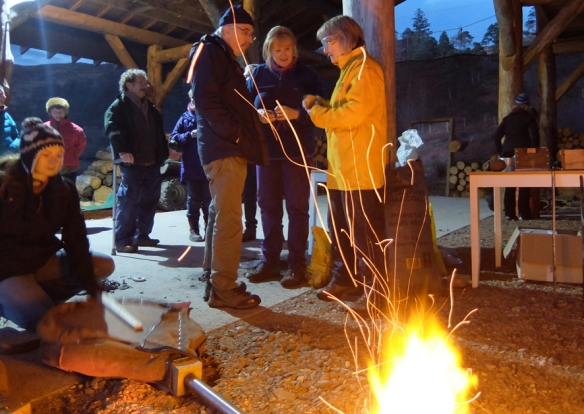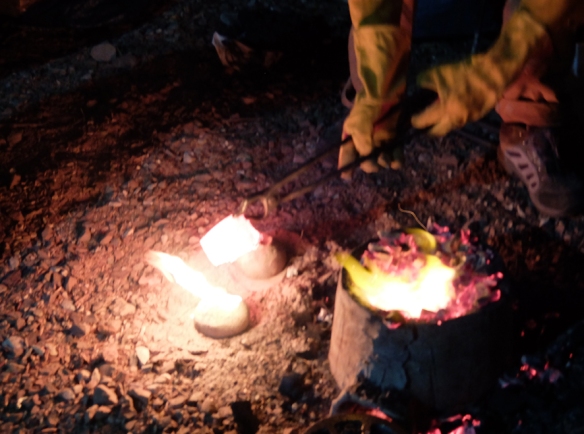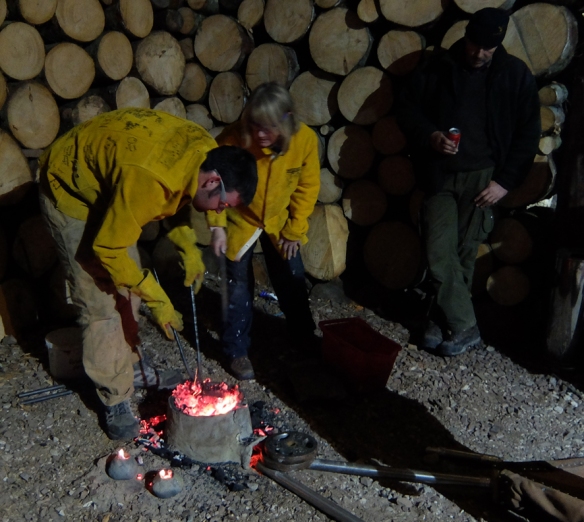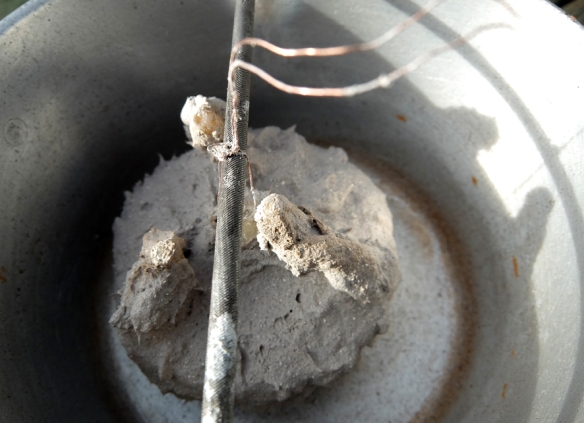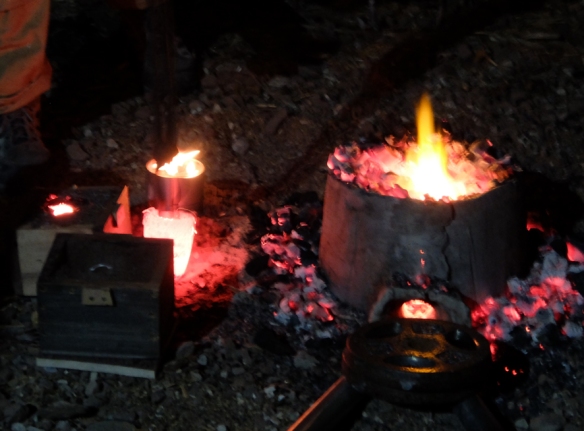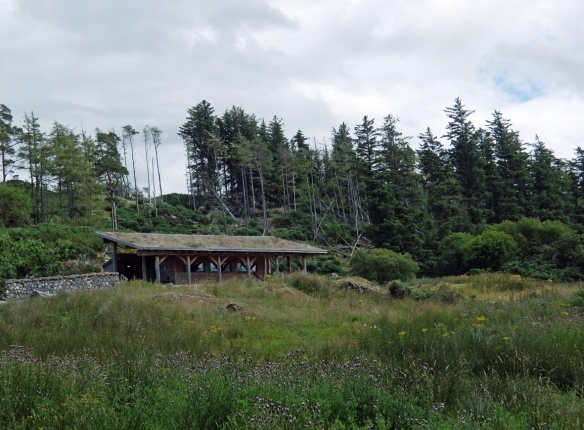Finally I got a weather window to start work on the second piece of my residency.
 We got a tent erected near to the broch, in the lee of the stones from the rockfall in the broch that the restoration project removed in season one. It was surprisingly easy to heave the stone lintel into the tent on Day 1 and surprisingly uncomfortable working in and out the tent. A lot of climbing in and out bent double and kneeling on uneven rocks was involved over the week. Some days were sunny and some grey and cold, nearly all were windy, with the wind battering the tent onto you as you worked.
We got a tent erected near to the broch, in the lee of the stones from the rockfall in the broch that the restoration project removed in season one. It was surprisingly easy to heave the stone lintel into the tent on Day 1 and surprisingly uncomfortable working in and out the tent. A lot of climbing in and out bent double and kneeling on uneven rocks was involved over the week. Some days were sunny and some grey and cold, nearly all were windy, with the wind battering the tent onto you as you worked.

So the process was:- firstly brush the bits off, then a layer of oil, which with hindsight was a bad idea; followed by a thin mix of silicon to pick up the details – because of the low temperatures and maybe insufficient mixing of the catalyst this seemed determined to follow gravity onto the groundsheet. However there was no choice but to continue, this time with a silicon layer with thickener. By then it was time to call it an end to Day 2. Although there were plans to return that night it was Day 3 that was spent putting on the third and final silicon layer with thickener. There was now a mighty fine silicon mould, but no way of knowing whether layer 1 had worked out.
![]()
Day 4 was onto the plaster and jute mother mould. I had a long and supportive conversation with the super helpful guy from Special Plasters before starting out. The first layer again seemed determined to make a mould of the ground sheet, but then we discovered that it was going off in the plaster puddles and this mix was perfect for the jute layers. I was paranoid that I’d make a plaster mould that couldn’t be removed, or carried out over the beach cobbles, so I designed a 6 part mould. I made little clay walls for each section and we filled them with three layers of plaster soaked jute with support straps.
 When I removed the clay wall on each piece I oiled the surface and designed a wedge to ease the separation of the sections. After the third section there was a mishap with the scales and we swapped for a different set. This seemed to hugely improve the consistency of the plaster from there on; and the job speeded up because there was no need to wait for the pools on the groundsheet to go off. The number of sections meant that the work went on into Day 5.
When I removed the clay wall on each piece I oiled the surface and designed a wedge to ease the separation of the sections. After the third section there was a mishap with the scales and we swapped for a different set. This seemed to hugely improve the consistency of the plaster from there on; and the job speeded up because there was no need to wait for the pools on the groundsheet to go off. The number of sections meant that the work went on into Day 5.
![]() However the plaster mould came off in sections as planned. Then the moment of truth, would the silicon mould have laminated, would the first layer have been successful? It was an anti climax, but a very welcome one, when it just lifted off and there it was, the first phase of a long process successfully completed. Perseverance paid off and I came away with a silicon mould that nestles in a plaster mother-mould.
However the plaster mould came off in sections as planned. Then the moment of truth, would the silicon mould have laminated, would the first layer have been successful? It was an anti climax, but a very welcome one, when it just lifted off and there it was, the first phase of a long process successfully completed. Perseverance paid off and I came away with a silicon mould that nestles in a plaster mother-mould.

 I’m hoping that they will weather and patinate over the years, I started the patination process with sea water and beeswax resist. They are mainly on the Stoer approach, but there are a few on the Clachtoll side. So if you are on the site do try and find all forty four of them.
I’m hoping that they will weather and patinate over the years, I started the patination process with sea water and beeswax resist. They are mainly on the Stoer approach, but there are a few on the Clachtoll side. So if you are on the site do try and find all forty four of them. Can you find the bone comb? Maybe a plan of the broch? A panda or a Pod?
Can you find the bone comb? Maybe a plan of the broch? A panda or a Pod?









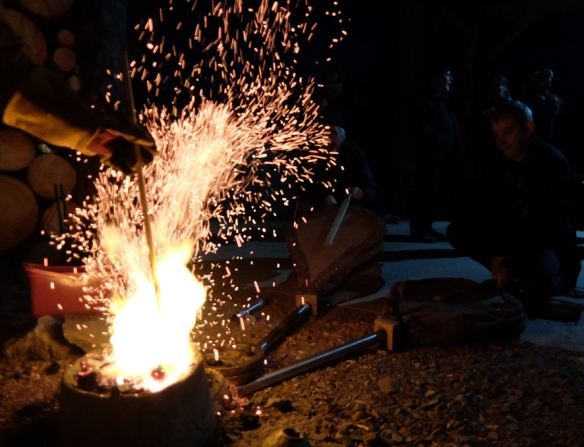
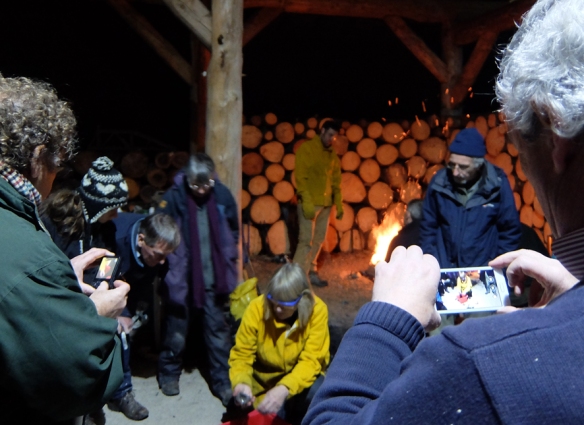
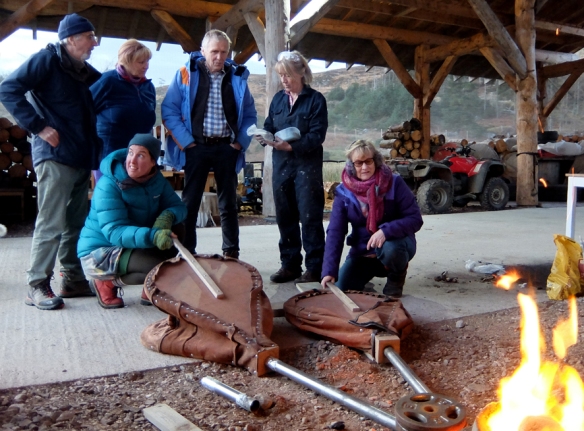
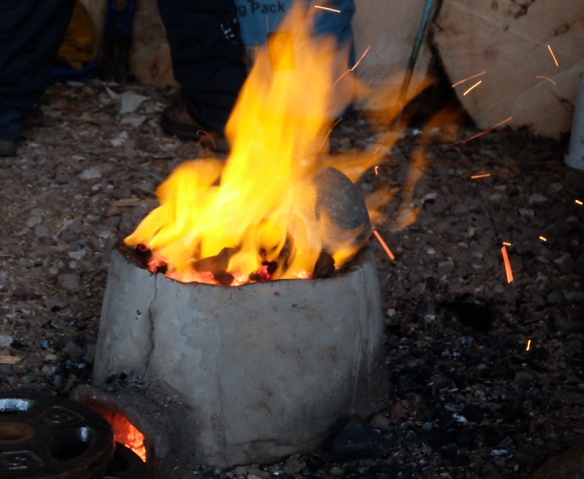 We had some local charcoal courtesy of Chris (although most of it came from the Chinese wholesalers in Dundee). Heather Fulton took loads of photos, some of which I’m using here.
We had some local charcoal courtesy of Chris (although most of it came from the Chinese wholesalers in Dundee). Heather Fulton took loads of photos, some of which I’m using here.